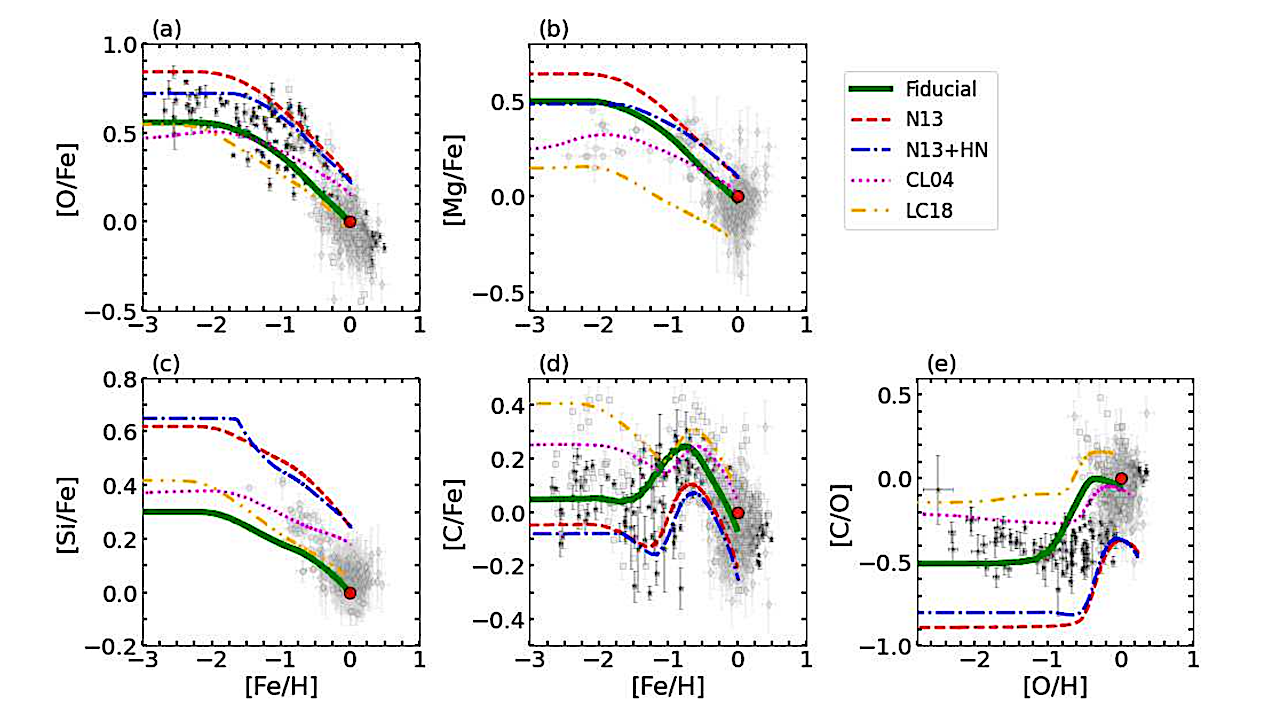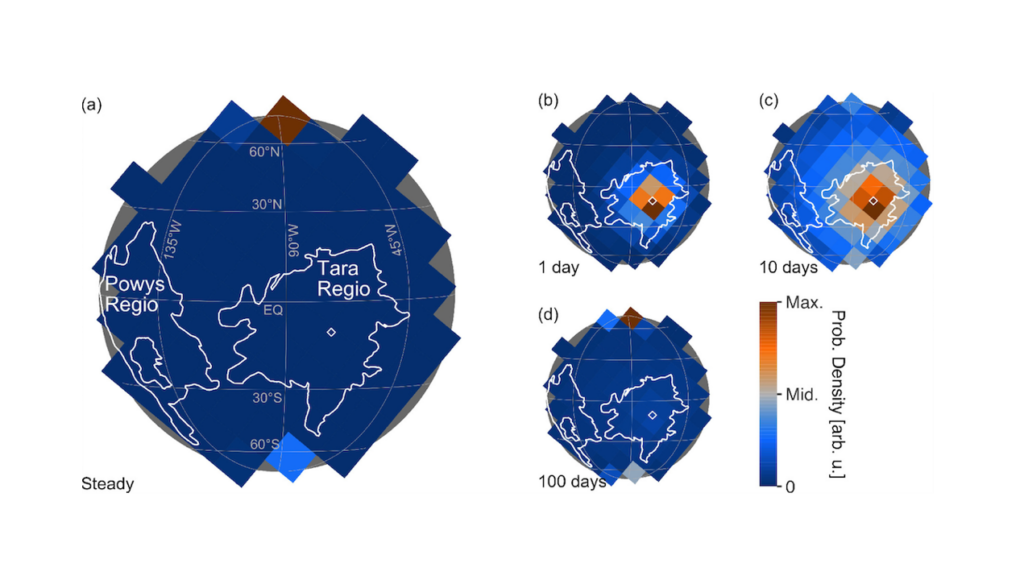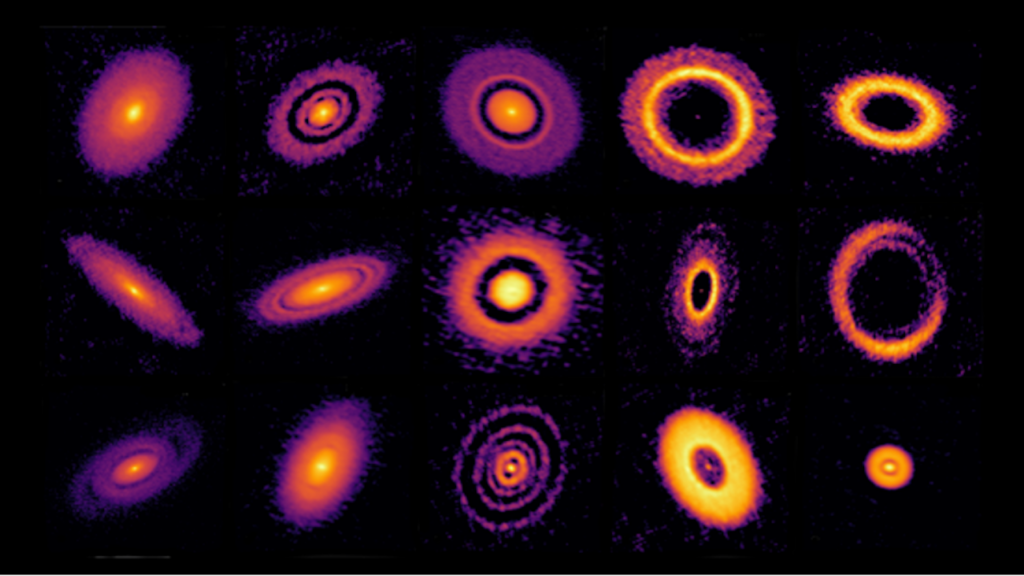Exploring The Sun’s Birth Radius And The Distribution Of Planet Building Blocks In The Milky Way Galaxy: A Multi-zone Galactic Chemical Evolution Approach

We explore the influence of the Milky Way galaxy’s chemical evolution on the formation, structure, and habitability of the Solar system. Using a multi-zone Galactic Chemical Evolution (GCE) model, we successfully reproduce key observational constraints, including the age-metallicity ([Fe/H]) relation, metallicity distribution functions, abundance gradients, and [X/Fe] ratio trends for critical elements involved in planetary mineralogy, including C, O, Mg, and Si.
Our GCE model suggests that the Sun formed in the inner Galactic disc, Rbirth,⊙≈5 kpc. We also combined a stoichiometric model with the GCE model to examine the temporal evolution and spatial distribution of planet building blocks (PBBs) within the Milky Way galaxy, revealing trends in the condensed mass fraction (fcond), iron-to-silicon mass fraction (firon), and water mass fraction (fwater) over time and towards the inner Galactic disc regions.
Specifically, our model predicts a higher fcond in the protoplanetary disc within the inner regions of the Milky Way galaxy, as well as an increased firon and a decreased fwater in the inner regions. Based on these findings, we discuss the potential impact of the Sun’s birth location on the overall structure and habitability of the Solar System.
Junichi Baba (Kagoshima/NAOJ), Takayuki R. Saitoh (Kobe), Takuji Tsujimoto (NAOJ)
Comments: 15 pages, 10 figures. Accepted for publication in MNRAS
Subjects: Astrophysics of Galaxies (astro-ph.GA); Earth and Planetary Astrophysics (astro-ph.EP); Solar and Stellar Astrophysics (astro-ph.SR)
Cite as: arXiv:2310.10335 [astro-ph.GA] (or arXiv:2310.10335v1 [astro-ph.GA] for this version)
Submission history
From: Junichi Baba
[v1] Mon, 16 Oct 2023 12:19:44 UTC (1,817 KB)
https://arxiv.org/abs/2310.10335
Astrobiology, Astrochemistry



![Measuring Interstellar Carbon Abundance via 158 um [CII] Absorption with SOFIA](https://astrobiology.com/wp-content/uploads/2025/05/Measuring-Interstellar-Carbon-Abundance-1024x575.png)




